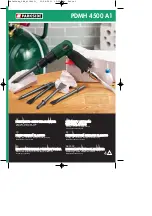
5.5.2
Use an autotransformer with a current rating that exceeds the maximum
unit input current called out in the unit specifications.
2.
3.
4.
5.
6.
NOTE
Input devices such as autotransformers_ or line
regulators c:an distort the input
wave
suffi
ciently to adversely affect performance measure
ments.
Apply high ac line input per specifications and set load switch to OFF.
Set the POWER switch to ON.
Rotate COARSE CURRENT control fully clockwise.
Use COARSE and FINE VOLTAGE controls to obtain rated output voltage
Note DVM reading after a few minutes of warm up time.
Decrease ac input voltage to low line specification. Output voltage DVM
change should not exceed limits specified in Table 5-3.
Close load switch and adjust load for rated current. Using high ac line
specification and full load, verify ripple meets specification.
Current Mode Regulation
To check current mode regulation, proceed as follows:
1.
2.
3.
4.
5.
5.5.3
At no load, adjust output to maximum rated voltage, and set COARSE
CURRENT control fully clockwise.
Connect a sense resistor (Table 5-2) or a prec1s1on meter shunt in
series with a variable load across the output terminals.
Connect input power at low line per unit specifications. Apply load un
til rated current of supply is reached. (Unit has voltage mode indi
cated). Adjust COARSE CURRENT control until CURRENT. mode indicat
or is lit and output volts DVM drops at least 5% of full scale value.
Connect a digital voltmeter across the sensing resistor, and note the
indication.
Increase input voltage until input voltage is at high line, and reduce
the load resistance to zero (short). Note indication on the digital volt
meter.
Change in voltmeter reading (expressed in millivolts) should
be divided by sense resistor value to obtain regulation in milliamperes.
Limits are provided in Table 5-3.
Transient Response
Test for transient response as follows:
1.
Connect an oscilloscope across the unit output terminals.
Maintenance
5-4
Rev B (6/84)
















































